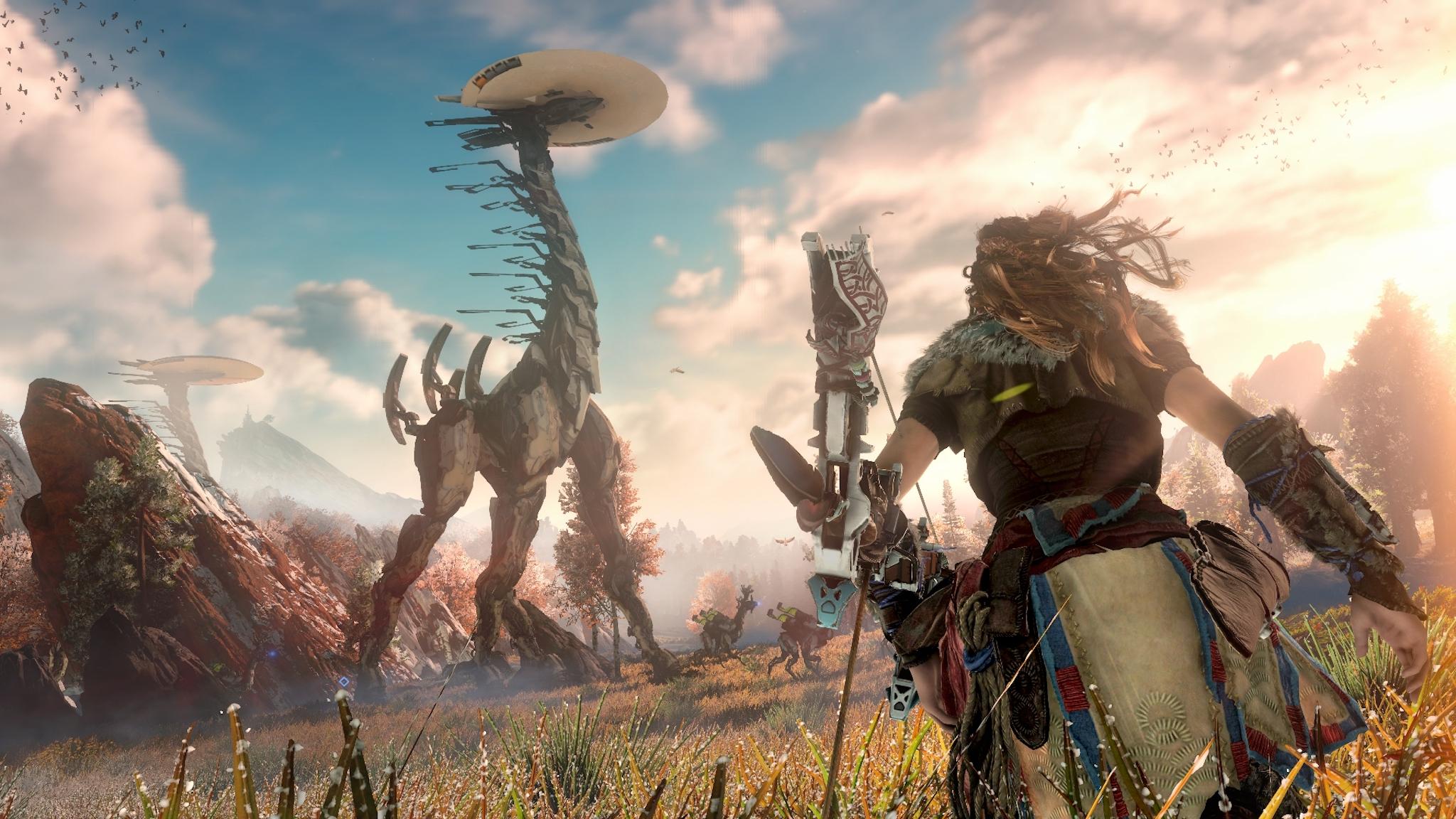How Horizon: Zero Dawn accidentally became 2017’s most important game
Environmentalism, automation and the triumph of the matriarchy: What started as sci-fi has emerged at a moment that makes it look eerily prescient

Horizon: Zero Dawn is supposed to be a fantasy game, and with its tale of huge robotic monsters roaming around a lush but post-apocalyptic landscape, it looks like one too. But after the year we’ve had, it can feel a little too close for comfort.
It wasn’t meant to be this way. When the game began, it started as a fun way of exploring an interesting environment – but by centring around the concerns of environmentalism, automation and feminism, it seems to have ended up as 2017’s most important game.
Horizon: Zero Dawn entered an entirely different world when it was fist pitched in 2010. In fact, it was mostly conceived of as a way of getting away from the kind of bleak horror of Killzone, the franchise that developer Guerrilla Games was previously famous for.
“Almost six years ago when Killzone 3 shipped, a small team went aside and started working on new pitches,” says Samrat Sharma, a developer at Guerrilla Games. “One of them was closer to what we are used to doing, and we knew we could get it and it was a very fun game.
“The other was super daunting and crazy, and so we decided to do that instead.”
Horizon ended up being a significant departure for Guerrilla. As well as being set in an entirely different world – Killzone depicted the life of a footsoldier in a hellish warring environment, where Horizon mostly centres around a relatively lonely individual in a huge lush expanse – it brought with it technical challenges, like it being the developer’s first role playing game, and being set in a huge expansive world where Guerrilla is used to orienting games around scenarios.
But at the centre of that game – and keeping all that huge world in check – is Aloy. It should be surprising that the developers opted to have a female main character and not force her to be sexualised or helpless, but it is.
Once again, Mr Sharma says that the developers accidentally stumbled into a character that embodied the game’s depiction of a world not lived in the patriarchy. It might feel like an exciting fantasy in these tough times – but it wasn’t supposed to be.
“Aloy was always part of the initial pitch when we made the game,” he says. “We wanted a vulnerable character who is capable but almost constantly in incredible danger.”
The character lives in a world inhabited by huge and terrifying machines – one that resembles our Earth but is different in significant and scary ways.
“These machines run the world and humanity is no longer the dominant species,” says Mr Sharma. “It turns out her quest for finding out who she is and where she comes from dovetails nicely with the player wanting to discover what this world is about and what is going on and why these machines exist.”
That was the main focus – not whether Aloy looked the right way or if she would suit the kinds of imaginary teenage boy that some developers continue to make their games for.
“It never crossed our minds that it would be a question as to why a female character,” says Mr Sharma, expressing a kind of excited shock that anyone would even wonder how it could happen. “We’re always caught by surprise.
“The decision to not sexualise her was also a no-brainer. We’re not that sort of studio, the decision was to make a character that told a story in a way that was organic.
“The world is harsh and beautiful. It leads itself to a sort of person who can be capable.”
With that character, as with all of the game, Guerrilla didn’t intend to make a statement; the statement was made for it, as the world moves towards the game.
“Given the world as it is at the moment wasn’t our reality six years ago, back in 2011 and 2010,” when the game’s pitching process began, Mr Sharma says. “So in reality we hadn’t thought of the conversations people would draw once the game was done.
“But it was a long process making the game. Whilst we were making the game the world changed. So now there are those questions, but it wasn’t our intent to make a statement.”
Still, for all his company’s prescience, Mr Sharma is keen to stress that there are universal concerns at the game’s core. Everything might seem a little topical – but the game worries about things that are as true now as they were six years ago when the game started being developed, and probably were true for thousands of years before that.
“There is something about a vulnerable yet strong character who has an incredible amount of empathy for everyone around her and wants to help them, even in the face of giant machine monsters,” says Mr Sharma. “There’s something universal about that, that doesn’t change with time.
“We’re quite proud of being able to tell that story, of resilience in the face of overwhelming odds. You don’t need to lose your empathy and love just to beat the odds.”
If there is a message for today’s mixed-up and often confusing world, though, Mr Sharma hopes that it can be one of faith and optimism about what comes after, not of despair about what might happen before we get there. Even in the desolate destruction of the post-apocalyptic world, the game’s colours are bright and lush, and its world is thrilling – even as huge killer robots stalk the earth, some hope grows.